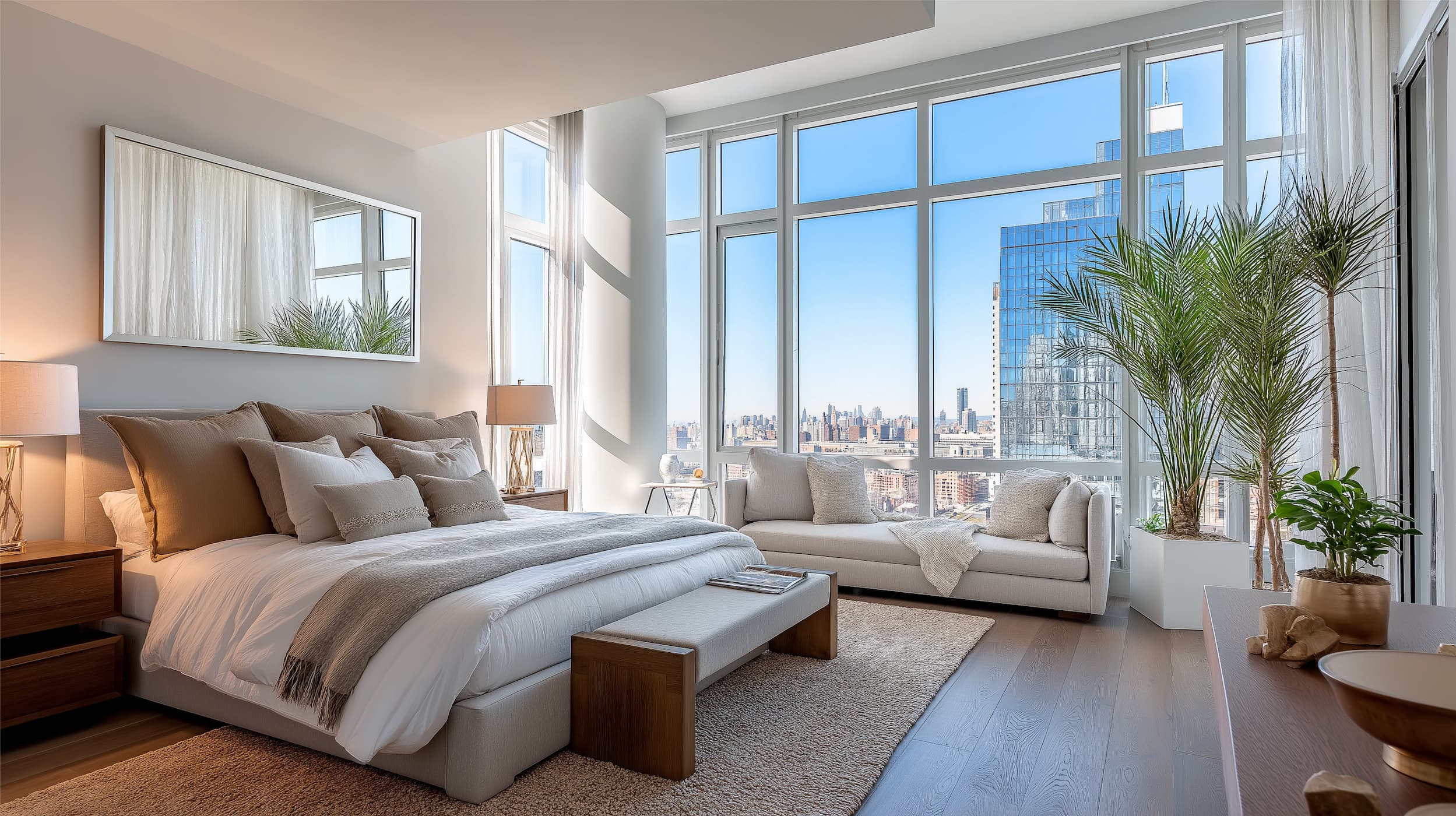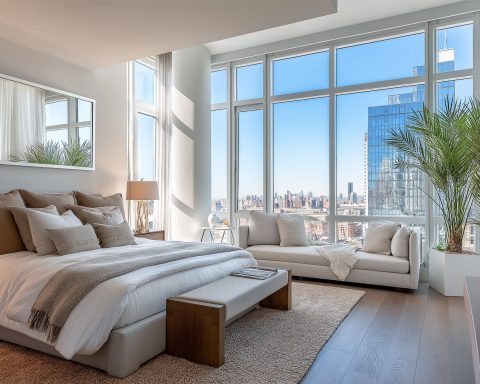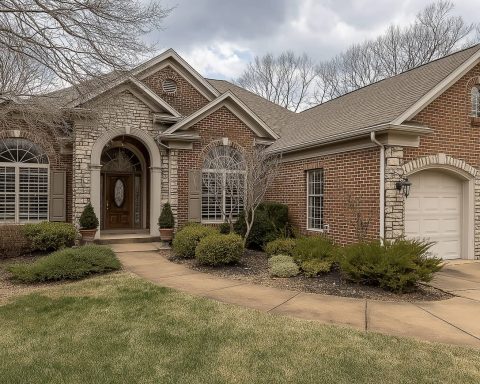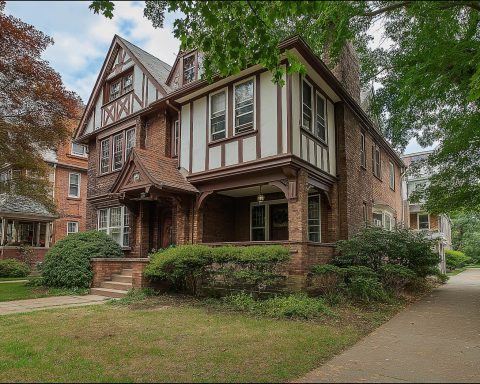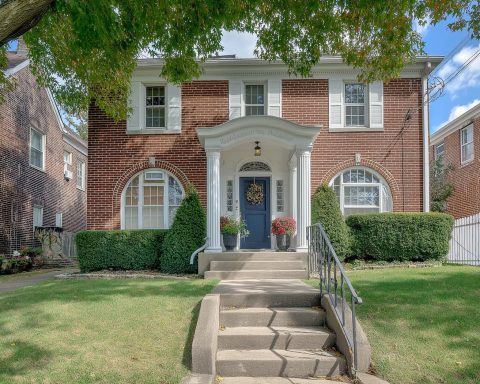- U.S. mortgage rates plunge: Average 30-year mortgage rates hit an 11-month low (~6.35%) amid rising bets on Federal Reserve rate cuts, spurring the strongest jump in home loan applications in over four years freddiemac.com. Buyers are cautiously re-entering as financing costs ease.
- Europe’s housing crunch: EU leaders warn “this is more than a housing crisis… a social crisis,” vowing an Affordable Housing Plan as house prices soared 20%+ since 2015 while building permits fell 20% housing.ec.europa.eu. In the UK, August saw the broadest price falls in 18 months as high inflation and rate uncertainty sap buyer demand reuters.com.
- Asia mixed – India up, China down: India’s home prices are set to jump ~6.3% this year (faster than expected) thanks to wealthy buyers, even as affordable supply dwindles reuters.com reuters.com. Meanwhile, China’s property slump persists – authorities in Beijing and Shanghai loosened home-buying caps to revive demand reuters.com reuters.com, with analysts expecting further housing support measures reuters.com.
- Middle East boom: Abu Dhabi’s property market is red-hot – transactions surged 34.5% in Q1 2025 gulfnews.com – buoyed by global investors and economic vision projects. Saudi Arabia approved a landmark law to open select real estate zones to foreign homeownership from 2026 cbnme.com, a move poised to “pave the way for significant international investments” cbnme.com.
- Commercial real estate divergence: Industrial and logistics properties remain resilient (warehouse vacancies near historic lows and rents rising), and retail/hospitality have rebounded with hotel occupancy now just 0.6% shy of pre-pandemic levels primior.com. But office markets worldwide face pain: U.S. office vacancies hit a record ~20% reuters.com, and Europe’s investment market is stuck in “‘zombieland’… no recovery, stranded assets, no liquidity,” one fund executive warned reuters.com.
- Luxury & prime segments defy gravity: High-end real estate is thriving despite broader slowdowns. In Colombia, a new Bogotá luxury complex sold 90% of units pre-construction at record prices (over $6,000 per m²) – even higher than upscale Mexico City or Rio neighborhoods bloomberg.com. And across global capitals, trophy assets (from posh condos to prime offices) continue to attract buyers seeking safe-haven investments.
North America: Housing Perks Up Amid Rate Optimism
Cooling rates boost housing sentiment: In the United States, mortgage costs have fallen sharply on expectations the Federal Reserve will finally trim interest rates. The average 30-year fixed mortgage dropped to 6.35% (the lowest since October 2024), marking the biggest weekly decline in a year freddiemac.com. “Mortgage rates are headed in the right direction and homebuyers have noticed,” Freddie Mac analysts noted, as home purchase applications surged with their fastest year-over-year growth in four years freddiemac.com. This dip in borrowing costs – fueled by a 94% market-implied chance of a Fed cut next week aljazeera.com – is offering a glimmer of relief to buyers after a long summer slump.
Buyer’s market emerging: Higher interest rates earlier this year had chilled activity, leaving many sellers with few bids. In some U.S. cities, homebuyer shortages are forcing price cuts or even prompting owners to walk away from listings, finally tilting leverage back to buyers. Nationwide inventory remains tight, but the spike in affordability pressures (from prices and rates) has clearly reined in demand. Now, with financing a bit cheaper, realtors report renewed foot traffic – yet buyers remain cautious amid economic crosscurrents like sticky inflation. “The housing market is clearly feeling the effects of ongoing uncertainty,” observed Tarrant Parsons of the Royal Institution of Chartered Surveyors (RICS), citing concerns over the wider economic and fiscal outlook that are “weighing on sentiment” reuters.com. In Canada, similar trends persist: major markets such as Toronto saw sales stalling through late summer as buyers awaited rate relief reuters.com.
Commercial real estate stress: North America’s commercial real estate picture is bifurcated. Apartments and industrial sites remain solid – U.S. multifamily rents are slowly rising again and warehouse vacancies stay near historic lows around ~6-7% primior.com. But the office sector is in a well-documented crisis. Remote and hybrid work have pushed U.S. office vacancy to 20.7% nationally (a record high) reuters.com, with tech hubs like San Francisco seeing a staggering 27.7% office vacancy – triple pre-pandemic levels reuters.com. Even New York’s downtown offices are nearly 23% empty reuters.com. This glut of unused workspace is “sending severe economic shockwaves” through cities reuters.com, eroding property values and straining regional banks exposed to office loans. Landlords facing debt maturities must contend with $290 billion in office mortgages coming due by 2027 amid higher refinancing costs reuters.com. In this tough climate, many owners and lenders are resorting to extensions or restructurings to avert defaults. One silver lining: a “flight to quality” is underway reuters.com, as companies consolidate into top-tier buildings (which maintain higher occupancy and rents) while older offices languish. Still, the overall outlook is cautious – industry analysts say the office market’s recovery will be long and uneven, hinging on broader return-to-office trends and economic stability.
Europe: Housing Crisis and Stalled Investment
Housing affordability at a breaking point: Europe is openly acknowledging a housing affordability emergency. In her State of the Union address on September 10, European Commission President Ursula von der Leyen lamented that for too many Europeans “home has become a source of anxiety” rather than security housing.ec.europa.eu. She noted housing costs have jumped over 20% since 2015, while construction of new homes has lagged badly (building permits down 20% in five years) housing.ec.europa.eu. “This is more than a housing crisis – it is a social crisis… tearing at Europe’s social fabric,” von der Leyen warned housing.ec.europa.eu. Brussels plans to introduce the first-ever European Affordable Housing Plan by year-end, aiming to ease state-aid rules for housing support, cut red tape on new development, and even regulate short-term rentals that squeeze supply housing.ec.europa.eu housing.ec.europa.eu. An EU-wide Housing Summit is being convened to put this issue at the top of the agenda housing.ec.europa.eu.
On the ground, several European countries are already seeing price corrections. Britain’s housing market has cooled notably under the weight of 14 consecutive Bank of England rate hikes. In August, UK house prices had their most widespread fall in a year and a half, according to the RICS survey reuters.com. New buyer inquiries and sales volumes have dropped to their lowest levels since mid-2020 reuters.com. “With buyer demand easing and agreed sales in decline, the housing market is clearly feeling the effects of ongoing uncertainty,” said RICS analyst Tarrant Parsons, noting that doubts over the economy and the future path of interest rates are sapping confidence reuters.com. Stubborn inflation (UK CPI ~6.7% in August) and rising mortgage costs have stretched affordability to the brink – a typical UK buyer’s purchasing power has eroded such that rents are now expected to jump (net +27% of surveyors foresee higher rents ahead, as would-be buyers remain stuck renting) reuters.com. Elsewhere, Germany – the EU’s largest economy – is also feeling the pain: housing transactions have slowed and prices are down ~6% from their peak, prompting Berlin to consider buyer incentives. Sweden, Ireland, and others that saw big pandemic-era gains have likewise seen prices soften in 2025 amid higher interest costs.
“Zombieland” investment market: In commercial real estate, Europe’s hoped-for rebound has been muted. After a severe 2020–2022 downturn, early 2025 optimism has given way to grim reality – transactions are stuck near decade-lows as buyers and sellers remain far apart on price. Through Q2 2025, cross-border property investment in Europe/Mideast/Africa fell ~20% year-on-year, the worst in a decade reuters.com. Many deals are on hold unless sellers capitulate to discounts. “We have ‘zombieland’… no recovery, stranded assets, no liquidity coming back,” said Sebastiano Ferrante, head of European real estate at fund giant PGIM, describing the stalled market reuters.com. Would-be buyers are cautious given weak economic growth and higher-yield alternatives (private credit fundraising now far outpaces real estate in Europe) reuters.com.
The stress is most visible in office and retail segments. Germany, for example, saw another 2% drop in commercial property sales in H1 2025 reuters.com, and iconic properties like Frankfurt’s troubled Trianon skyscraper are up for distressed sale as a test of market appetite reuters.com. Values for secondary offices and older shopping centers have slumped, and even buzzy sectors like data centers have cooled reuters.com. However, select bright spots exist: well-leased logistics facilities and rental housing portfolios remain in demand, as investors bet on structurally undersupplied segments reuters.com. Top-quality (“trophy”) office buildings in prime city locations are also holding value – their vacancies are far lower (often 5 percentage points below market averages) and rents still rising for the best space primior.com. “In some parts of the market the recovery is well under way… however, there are out-of-favor assets with almost no liquidity and more pain to come,” noted Cecile Retaureau of Phoenix Group’s investment arm, cautioning that Europe’s rebound will be very uneven reuters.com.
Asia-Pacific: China’s Slump vs. India’s Surge
China eases property curbs: China’s once-unstoppable real estate sector remains a key weak spot in its economy, now in a multi-year downturn marked by developer debt crises and waning buyer confidence. In a bid to stoke housing demand, authorities in top cities have started loosening strict purchase rules. In late August, Shanghai relaxed limits so that eligible families (and even single adults, now treated as families) can buy more than one home in suburban areas outside the outer ring road reuters.com. Beijing made similar moves, for instance allowing unmarried individuals to qualify as first-time buyers – part of a broader policy shift to prop up sales. These local measures followed the central government’s calls to support “reasonable” housing needs. So far, the impact has been modest: September data (due shortly) is expected to show a slight pickup in sales in big cities, but nationwide prices are still under pressure. Policymakers have signaled more help is on the way – China’s Finance Ministry this week insisted there is “ample room” for fiscal support and that risks from the property crisis are controllable, hinting at potential new spending or housing stimulus reuters.com reuters.com. Markets are also eyeing the People’s Bank of China, which has trimmed mortgage rates and could ease further if U.S. rate cuts reduce pressure on the yuan reuters.com. The goal is to engineer a soft landing: officials want to stabilize home prices and sentiment without reigniting a speculative bubble. With some large developers in restructuring (and Country Garden narrowly averting default), restoring confidence is paramount. Any sustained turnaround may not come until later in 2025 – S&P forecasts suggest China’s property sales could find a floor by H2 2025 as urban inventory is absorbed bloomberg.com.
India’s housing upcycle and affordability fears: In contrast, India’s real estate market is riding a buoyant uptrend – but one that raises its own concerns. A new Reuters poll of property experts finds Indian house prices are set to rise 6.3% in 2025 and another 7.0% in 2026 reuters.com, outpacing both last year’s growth and prior forecasts. This acceleration is fueled largely by the upper end of the market: demand for premium and luxury homes in major cities is booming, thanks to rising incomes among the wealthy and a surge in NRI (non-resident Indian) investments. At the same time, the supply of affordable housing has dwindled – India faces a shortage of about 10 million affordable homes today, a deficit that could triple by 2030 if current trends continue reuters.com. The result is a two-speed market. “The gains are increasingly captured by a small segment of the population… those at the lower side of the pyramid are at a disadvantage,” observed Ajay Sharma, managing director at Colliers India reuters.com. He noted that while India’s economy is growing briskly (7.8% last quarter) reuters.com, middle-class incomes have stagnated, putting home ownership out of reach for millions of urban migrants. Many are forced to rent instead, which in turn is pushing urban rents up 5–8% annually – rising even faster than general inflation reuters.com. “As affordability in both core and suburban areas declines, more people are renting – and as more people rent, rentals have gone up,” Sharma said, explaining the vicious cycle reuters.com. Analysts warn of long-term consequences if the affordability gap widens. “Post-financialisation in real estate, we have not improved affordability; we have worsened it,” said Pankaj Kapoor of Liases Foras, noting the average first-home buyer’s age in India has risen by well over a decade, from the early 30s to mid-40s reuters.com. To tackle this, policymakers have rolled out interest rate subsidies for first-time buyers and pushed developers to launch more mid-range projects, but so far the “market is leaning heavily toward premium homes” and pricing out entry-level buyers reuters.com.
Elsewhere in Asia-Pacific: The region’s other real estate markets present a mixed picture. Australia is seeing a modest revival in 2025 – after a dip last year, Sydney and Melbourne home prices are inching up again as the Reserve Bank pauses rate hikes. However, high household debt and mortgage stress in some areas cap the upside. Japan remains stable, with solid demand for both residential and commercial properties (helped by ultra-low interest rates). The office sector in Asia is generally healthier than in the West, though pockets of weakness exist – e.g. Hong Kong’s office rents are under pressure as mainland Chinese firms pull back. Singapore and Seoul are outperformers; their luxury residential sales have been robust (Singapore saw record-high penthouse deals this quarter), prompting new cooling measures like higher stamp duties for foreigners. Across the region, investors are also keenly attuned to interest rate trajectories: with the U.S. and possibly Europe shifting to cutting mode, Asian central banks may follow, which could boost real estate activity in 2026 through cheaper financing.
Middle East: Investment Magnet – Gulf on the Rise
While other regions grapple with challenges, the Middle East real estate markets – especially in the Gulf – are in the midst of a remarkable upswing. High oil revenues, economic diversification drives, and pro-investment policies have combined to super-charge property sectors in the UAE and Saudi Arabia.
Gulf real estate thriving: Abu Dhabi and Dubai continue to see strong capital inflows into property. In Abu Dhabi, real estate transactions totaled AED 25.3 billion in Q1 2025 (≈$6.9B), up 34.5% year-on-year across nearly 6,900 deals gulfnews.com. Officials credit the emirate’s resilient economy and its appeal for “sustainable, high-end living” as a magnet for overseas investors gulfnews.com. At a major industry event (IREIS 2025) held in Abu Dhabi this week, local experts struck an optimistic tone. “Momentum in Abu Dhabi’s property sector continues to accelerate, as the UAE’s wider real estate market witnesses growing interest from investors,” said Amer Al Ahbabi, chairman of a UAE real estate firm gulfnews.com. Developers are reporting that luxury waterfront projects and new villa communities are selling out, often to foreign buyers pursuing Golden Visas. In Dubai, the post-pandemic boom has kept rolling – property sales in 2025 to date are on track to set new records, with international buyer participation especially high. Key segments like prime beachfront homes and commercial offices in free zones are seeing bidding wars. Both Abu Dhabi and Dubai have also embraced innovation: from digital property transactions to tokenization trials (as noted by IREIS organizers) to attract modern investors gulfnews.com.
Saudi Arabia’s big moves: The Kingdom of Saudi Arabia, amid its Vision 2030 reforms, just enacted a landmark policy change: it will allow foreign individuals to own property in certain designated zones starting in 2026 cbnme.com. This is a revolutionary step for a market that historically was closed to outside buyers (aside from some residency programs in Dubai-like developments). The new law, approved by the Saudi Cabinet under Crown Prince Mohammed bin Salman, is expected to “catalyse a surge in international interest and investment,” according to Rachel Sturgess, an executive organizing Cityscape Global cbnme.com cbnme.com. Cityscape Global – one of the world’s largest real estate conferences – will be held in Riyadh in November and is poised to showcase these opportunities to an audience of global investors and developers. Last year’s Cityscape in Dubai saw a 37% jump in foreign attendance, and the 2025 Riyadh edition is projected to be even bigger cbnme.com cbnme.com. The opening of Saudi real estate is happening alongside mega-projects like NEOM (the $500B futuristic city) and a construction boom in Riyadh and Jeddah. Property observers say Saudi Arabia could become the “next UAE” in terms of attracting global capital, especially if it sets up appealing regulatory and tax frameworks in the new zones. Already, reports suggest major developers from the US, UK, China, and UAE are eyeing entries into Saudi’s newly liberalized market cbnme.com.
Wider Middle East and North Africa: Across the region, real estate is on a generally positive trajectory in 2025. Qatar is enjoying a post-World Cup momentum – the latest data shows Doha’s real estate transactions in early September totaled QAR 394 million (~$108M) in a week, reflecting steady activity arabnews.pk. Egypt, amid economic turmoil, has seen property as a preferred asset for locals to hedge inflation; developers are offering extended payment plans to tap pent-up housing demand. Israel’s housing prices, which soared in recent years, have finally plateaued as higher interest rates bite, but a severe shortage of new homes keeps values high (political instability notwithstanding). Turkey remains a unique case: foreign buying (especially by Russians, Iranians) has propped up Istanbul’s real estate even as the lira’s value plunged; however, new regulations on citizenship-by-investment have tempered some of that demand. Meanwhile, Gulf retail and hospitality real estate is booming thanks to tourism rebounds – Dubai’s mall operators and hotel REITs report strong occupancy and rent growth, buoyed by record visitor numbers in 2025.
Latin America: Slumps and Bright Spots
Latin America’s property markets have had a challenging year in many respects – high interest rates across the region have dampened mortgage lending and cooled previously hot markets. Yet within this overall slowdown, there are striking pockets of resilience, particularly in the luxury segment.
Colombia – luxury defies the slump: Perhaps the most dramatic example comes from Bogotá, Colombia, where a new ultra-luxury condo development is shattering price records even as the broader Colombian housing market slumps. The project, known as Quora, is a high-end complex of 202 apartments plus offices and retail, rising from an assemblage of properties in an upscale district. Despite being three years away from completion, over 90% of its residences have sold – including penthouses of 546 m² – at prices around 24 million Colombian pesos per square meter (roughly $6,100/m²) bloomberg.com. That’s about 33% higher than the prior record price in Bogotá and even exceeds top-end prices in wealthier Latin American capitals (for context, it’s pricier per m² than luxury units in Mexico City’s Polanco or Rio de Janeiro’s Ipanema) bloomberg.com. The success of this project starkly “defies Colombia’s battered real estate sector”, which has otherwise been hit by a construction financing crunch and a spike in building company insolvencies over the past year. Wealthy buyers, both local and international, have flocked to Quora as a safe investment and status symbol, suggesting confidence in the long-term value of prime Latin American real estate. Developers in the region are pointing to Bogotá’s example as evidence that demand at the very top remains strong – if you build something truly unique, the buyers will come, even in a downturn.
Regionwide trends: Outside of such enclaves, however, many Latin American housing markets are softening. In Mexico, after a pandemic-era boom, house price growth has cooled in 2025 in real terms due to inflation and higher loan rates, though areas like Mexico City and Guadalajara still see modest appreciation. Brazil is at a turning point: the central bank has begun cutting interest rates (with the Selic rate down to 12.75% in September from a peak of 13.75%), which should gradually revive Brazil’s property market. Brazilian homebuilders report improved buyer inquiries as mortgages become a bit more affordable, and analysts expect housing sales to pick up into 2026 if rate cuts continue. Chile and Peru experienced price dips in 2024 amid recessionary conditions, but appear to be stabilizing now. In Argentina, an extreme outlier with its economic volatility, real estate transactions have nearly frozen in 2025 as buyers await the outcome of elections and a possible dollarization – property is still mostly priced in U.S. dollars there as a hedge, putting it out of reach for most locals.
Signs of revival: On the commercial side, Latin America has some positive momentum. Industrial real estate (warehouses, logistics) is thriving in Mexico due to nearshoring factory investments; demand for modern logistics facilities along the U.S.-Mexico border and central Mexico is outstripping supply. Brazil’s agribusiness boom is spurring development of storage and distribution properties in states like Mato Grosso. And retail real estate, which struggled during COVID, is recovering as consumer spending improves – for instance, mall operators in Brazil and Chile report foot traffic and tenant sales bouncing back to 2019 levels. This is attracting interest from foreign investors: just this week, a major Middle Eastern sovereign fund announced plans to invest in a retail center portfolio in Latin America (seeking to buy assets at a relative discount, betting on recovery).
Overall, Latin America’s real estate outlook hinges on macroeconomic trends. If inflation can be tamed and interest rates continue to fall (as seen in Brazil, Chile, etc.), the region could enter a more expansionary real estate cycle. For now, developers are cautious – focusing on either the very high end (which remains profitable) or niche demand (like affordable housing where government subsidies are available). But as Bogotá’s luxury condo boom shows, not all parts of the market move in unison, and there are always pockets where confidence – and prices – are soaring.
Africa: Urban Growth and Emerging Opportunities
Across Africa, rapid urbanization and economic growth in select countries are underpinning a generally positive real estate narrative, even as challenges like housing shortages and high financing costs persist. Several African cities are now real estate investment hotspots to watch heading into 2025, thanks to rising middle classes, improved governance, and foreign capital inflows.
Key cities on the rise: Nairobi, Kenya is one such hub. Often dubbed the “Silicon Savannah” for its booming tech scene, Nairobi’s influx of tech firms and professionals has fueled demand for both modern offices and quality housing. Prime business districts like Westlands and Upper Hill have attracted multinational companies, driving up occupancy in Grade A offices. On the residential side, Nairobi’s property values have shown impressive growth – in some suburban areas (e.g. Athi River, Kitengela), home prices climbed about 20% year-on-year, partly due to new infrastructure and affordable housing projects drawing middle-class buyers estateintel.com. The Kenyan government and banks are actively supporting housing: a $30 million fund was recently injected by a major bank to expand mortgage access for affordable homes kmrc.co.ke, and a national Housing Fund is helping finance new units. Similarly, Lagos, Nigeria, the continent’s most populous city, continues to see huge real estate demand. Despite high interest rates, Lagos’s sheer population (20+ million) and commercial dynamism keep pressure on housing supply. Luxury neighborhoods like Ikoyi and Victoria Island remain highly valued by elites – average property prices in Lagos are projected to approach ₦50 million (about $65,000) per unit by 2025 for mid-tier homes estateintel.com – while more affordable districts on the mainland are also growing as developers target young professionals estateintel.com. The Lagos State government is rolling out incentives for mass housing and new city developments (e.g. the Lekki Free Trade Zone area is spurring mixed-use projects) estateintel.com.
Other cities drawing investor attention include Accra, Ghana, where a stable political climate and oil-fueled economy have led to a construction uptick. Ghana’s real estate market value is forecast to reach about GH¢533 billion by 2025 (with residential making up the bulk) estateintel.com. Upscale Accra suburbs like East Legon and Cantonments see constant demand for luxury apartments from the diaspora and expats, even as the government also promotes affordable housing for its growing middle class. Kigali, Rwanda is a smaller market but notable for its rapid growth and innovative approach – the city has attracted impact investors with initiatives like Green City Kigali, aiming to build sustainable homes and boasting rental yields above 9–12% on residential and retail properties estateintel.com estateintel.com. And Johannesburg, South Africa, the continent’s financial capital, remains resilient: despite South Africa’s economic headwinds, Joburg’s prime office vacancies have improved to ~12% in top areas like Sandton estateintel.com, and industrial rents around the city are rising (~6% annual growth for large logistics spaces) as the e-commerce and distribution sector expands estateintel.com.
Continental initiatives: There is also a broader pan-African push to tackle housing deficits and unlock real estate potential. Multilateral institutions and governments are collaborating on funds for affordable housing development – for example, Kenya’s KMRC (Kenya Mortgage Refinance Company) has been championing low-cost mortgage lending and held a major Affordable Housing Conference in 2025 kmrc.co.ke. Nigeria recently launched a Diaspora Mortgage program to allow Nigerians abroad to more easily invest in homes back home nidcom.gov.ng, and the Federal Mortgage Bank of Nigeria is offering single-digit interest rate home loans (around 9.75%) to boost domestic homeownership naltf.gov.ng. These efforts address a young, growing population that aspires to own homes but often lacks access to credit. If successful, they could gradually raise homeownership rates and spur construction across Africa.
Foreign investors are taking notice: private equity real estate funds targeting Africa have increased, focusing on everything from shopping malls in West Africa to office parks in Egypt and logistics centers in East Africa. Overall, Africa’s real estate market in 2025 is poised for growth, driven by urbanization and rising investment. As one industry report put it, the key will be focusing on cities with favorable demographics and policies, and sectors like retail and industrial that can capitalize on the continent’s development trajectory estateintel.com estateintel.com. The opportunity is vast – but so is the work needed to build housing and infrastructure for the future.
Expert Outlook and Closing Thoughts
Across the globe, real estate is a story of contrasts in late 2025. On one hand, cooling inflation and monetary policy shifts are providing relief – nowhere more visible than in the U.S., where the possibility of interest rate cuts has already brought mortgage rates down and rekindled some buyer optimism freddiemac.com. This dynamic underscores how closely housing fortunes are tied to central banks’ moves. As Michael Feroli, JPMorgan’s chief U.S. economist, observed regarding the Fed’s stance, the path of least resistance now seems to be easing rates sooner rather than later aljazeera.com – a shift that, if it materializes, could be a game-changer for real estate markets in 2026.
On the other hand, structural challenges remain daunting. Supply shortages – whether of affordable homes in India and Europe or of high-quality offices in certain locales – are driving inequities and “frustrated options,” to borrow the words of one Indian housing expert reuters.com. The commercial real estate shakeout, especially in offices, is forcing a painful repricing of assets; industry veterans caution that the process is far from over, with more distressed sales and refinancings likely in 2024–2025 reuters.com. Yet even here, adaptation is visible: markets are clearing through “extend and pretend” measures, and innovative re-use of redundant offices into housing or life science labs is starting in some cities.
Perhaps the clearest takeaway is that real estate is intensely local and segmented. We see luxury condos in Bogotá selling at record prices bloomberg.com while starter homes in many cities become unattainable for young families. We see Middle Eastern developers unable to build fast enough to meet demand, even as American office towers sit half-empty. For investors and policymakers, this means broad generalizations can mislead – one must examine each sector and region on its own fundamentals.
The recent headlines from September 12–13, 2025, capture this dichotomy well. They tell of governments scrambling to address housing affordability housing.ec.europa.eu, of financiers like Brookfield reshuffling portfolios (pondering a €1.9 billion sale of student housing assets in Europe amid sector risks) ainvest.com, and of hopeful signs like mortgage relief and resurgent emerging markets.
In sum, the global real estate market is navigating a roller coaster of cyclical shifts and structural reordering. As we enter the final quarter of 2025, cautious optimism is emerging in some quarters – if interest rates indeed ease, 2026 could see a broad-based thaw in transactions. But as the past two days of news remind us, real estate in 2025 remains a landscape of contrasts: booming in one segment, bottoming in another. Staying informed and agile is crucial. In the words of one Middle East property executive, “This is an historic moment… exciting new changes will pave the way for significant investments”, but those opportunities will favor those who understand where the momentum is building cbnme.com. For now, the only certainty is that the world’s property markets will continue to surprise us – climbing, correcting, and reinventing themselves in response to the economic winds.
Sources:
- Reuters – Freddie Mac: Mortgage Rates Drop (Sept 11, 2025) freddiemac.com; Al Jazeera – Fed expected to cut rates (Sept 12, 2025) aljazeera.com
- Reuters – UK housing slows, RICS survey (Sept 10, 2025) reuters.com reuters.com; European Commission – State of Union: Housing crisis (Sept 10, 2025) housing.ec.europa.eu housing.ec.europa.eu
- Reuters – India home prices to soar – poll (Sept 13, 2025) reuters.com reuters.com; Reuters – China fiscal support, housing support eyed (Sept 12, 2025) reuters.com reuters.com; Reuters – Shanghai eases home-buying curbs (Aug 25, 2025) reuters.com
- Gulf News – Abu Dhabi real estate accelerates (Sept 12, 2025) gulfnews.com gulfnews.com; Construction Business News ME – Saudi foreign ownership law (Aug 27, 2025) cbnme.com cbnme.com; Arab News – Qatar real estate sales early Sept 2025 arabnews.pk
- Reuters – European real estate “zombieland” (July 17, 2025) reuters.com reuters.com; Reuters (Press) – U.S. office vacancies record high (Aug 25, 2025) reuters.com reuters.com; Primior Research – Commercial sector trends 2025 primior.com primior.com
- Bloomberg – Bogotá luxury condos defy slump (Sept 12, 2025) bloomberg.com; EstateIntel – Africa real estate outlook 2025 estateintel.com estateintel.com.
